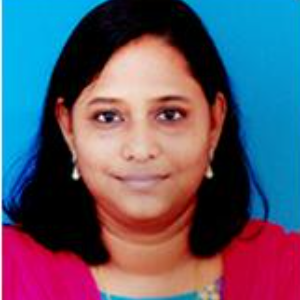Title : Hierarchical 2D and 1D Transition metal sulfide nanostructures for energy storage application
Abstract:
The ever-growing demand for energy resources, depletion of conventional energy resources, and the constant rise in global warming have driven scientists to move towards carbon-free energy storage systems. Supercapacitors and batteries are some electrochemical energy storage (EES) devices essential in storing clean energy. The latest advances made with EES devices, especially supercapacitors’ high power density values, have created a paradigm shift in our society's usage of advanced electronic gadgets. Transition metal sulfides with two-dimensional layered structures (MoS2) and a one-dimensional chain-like structure (VS4) with intriguing physical and chemical properties are ideal for supercapacitors. However, these materials’ morphology, surface area, porosity, pore sizes, and functionality must be fine-tuned to attain many folds in their storage capacity. Here, we discuss the strategies that have been carried out to achieve high-performance hierarchical 1D or 2D nanomaterials. The nanostructures were systematically analyzed for their physicochemical and electrochemical properties. These electrodes deliver excellent cycling performance with high-capacity retention. The cyclic voltammetry studies indicate that MoS2 and VS4 nanomaterials follow pseudo capacitance behavior rather than electrochemical double layer capacitance nature. In addition, the capacity values are highly dependent on the nanomaterials' morphology, surface area, and porosity values. Energy and power density values of as high as 94Wh/Kg and 400K/kg, respectively, have been obtained for the 1D VS4 with excellent cycling stability up to 10000 cycles in a symmetric solid state device configuration, promising it to be a high potential candidate for the future energy storage devices. The work presented here also could widen the application of these sulfide nanomaterials to many flexible thin film devices.
What will audience learn from your presentation?
- From this talk, the audience would be able to learn the crystal structure of Transition metal chalcogenides and their charge storage mechanism as electrodes for supercapacitors. The various strategies followed in synthesizing/designing the hierarchical nanomaterials can be explored for their material of interest.
- This presentation would provide an idea of the requirements of EES systems and their types.
- Synthesis and material activation methods can be extended to achieve different classes of materials with high surface area.
- The knowledge acquired from various electrochemical measurements would help teach and understand their material’s energy storage capacity.


